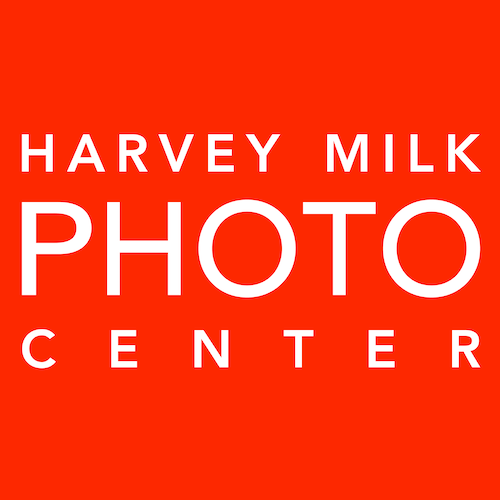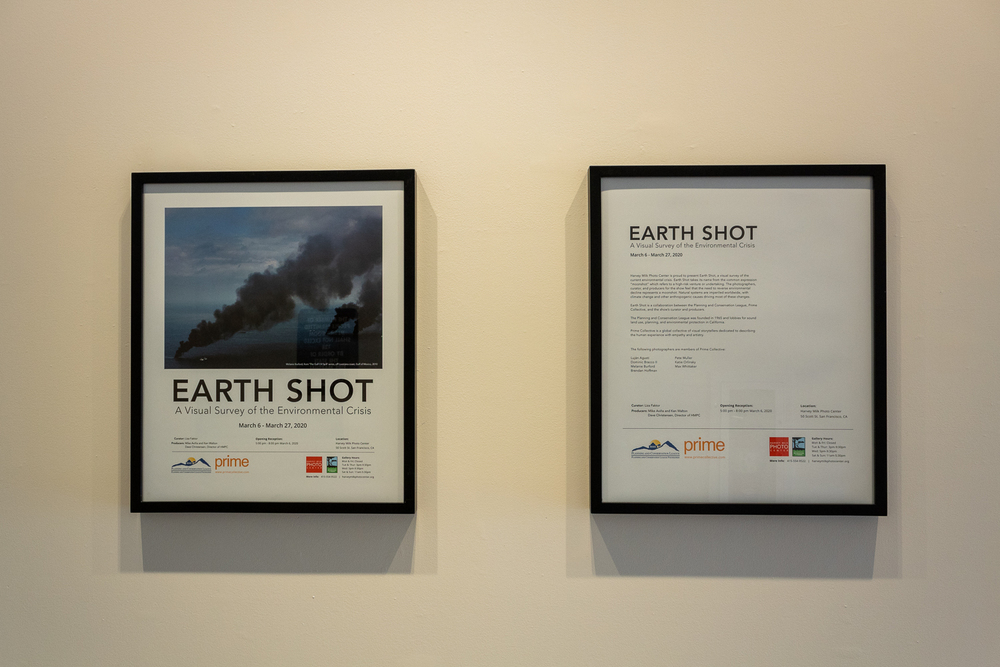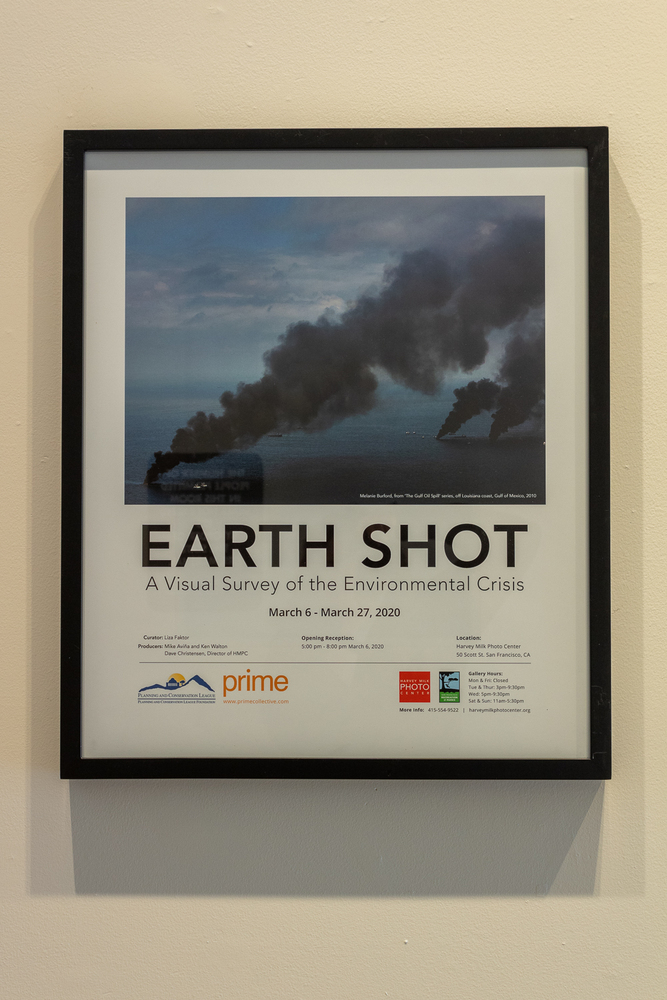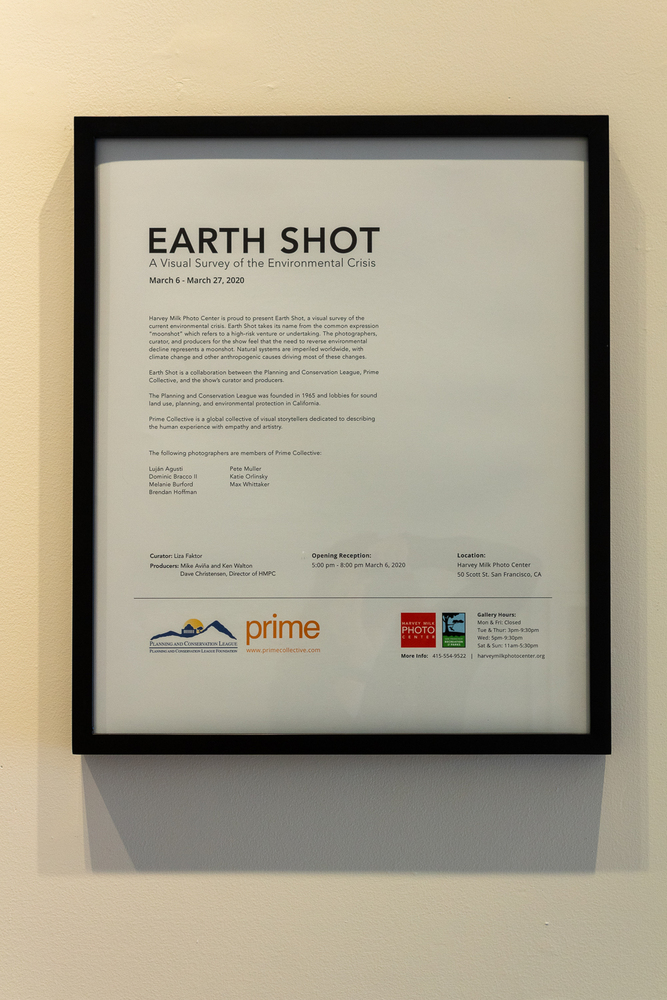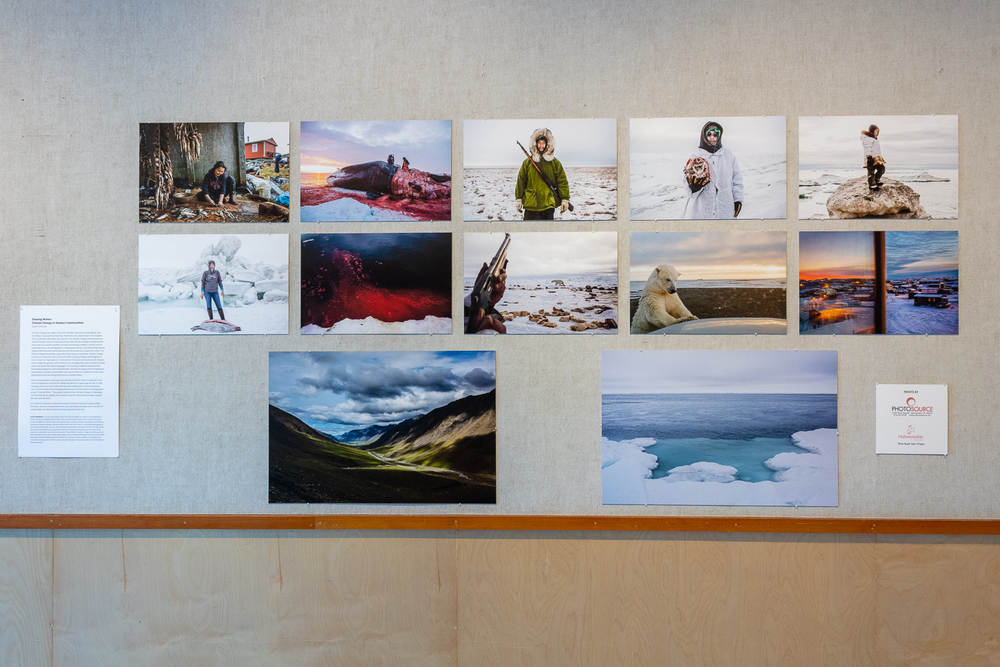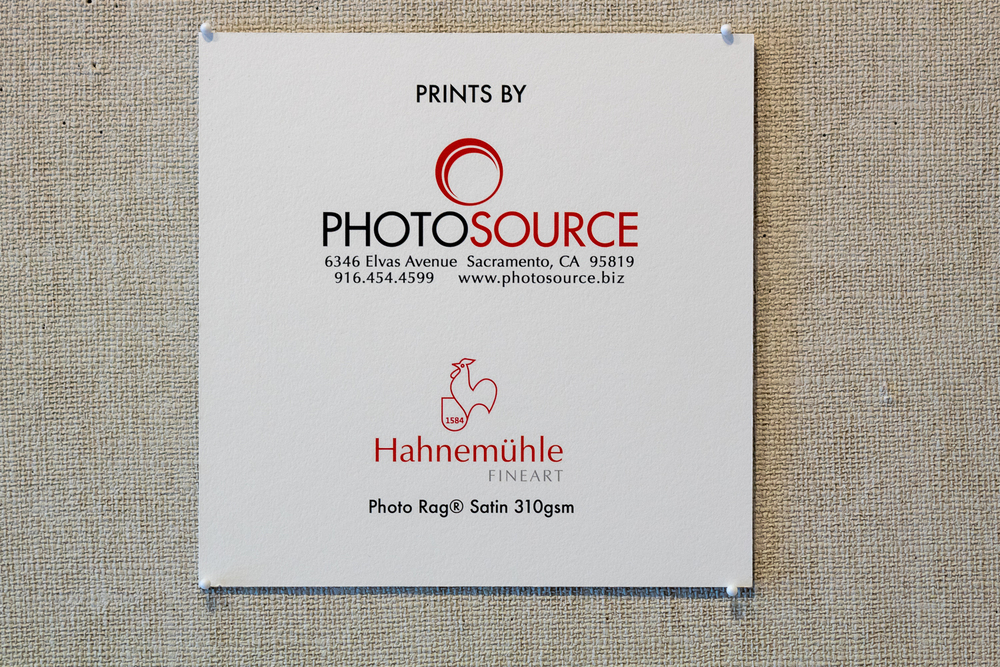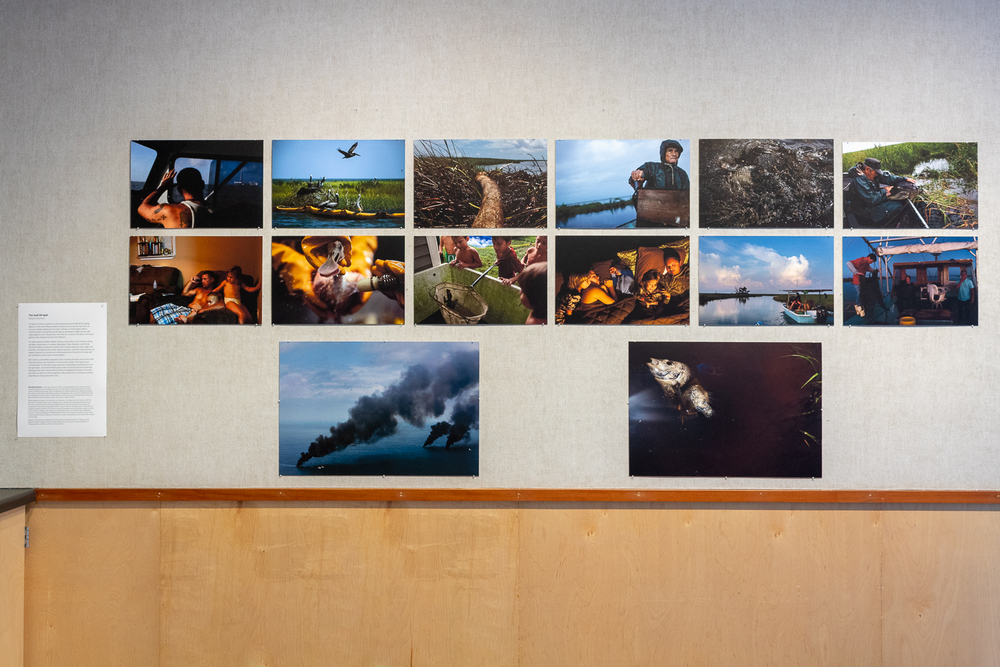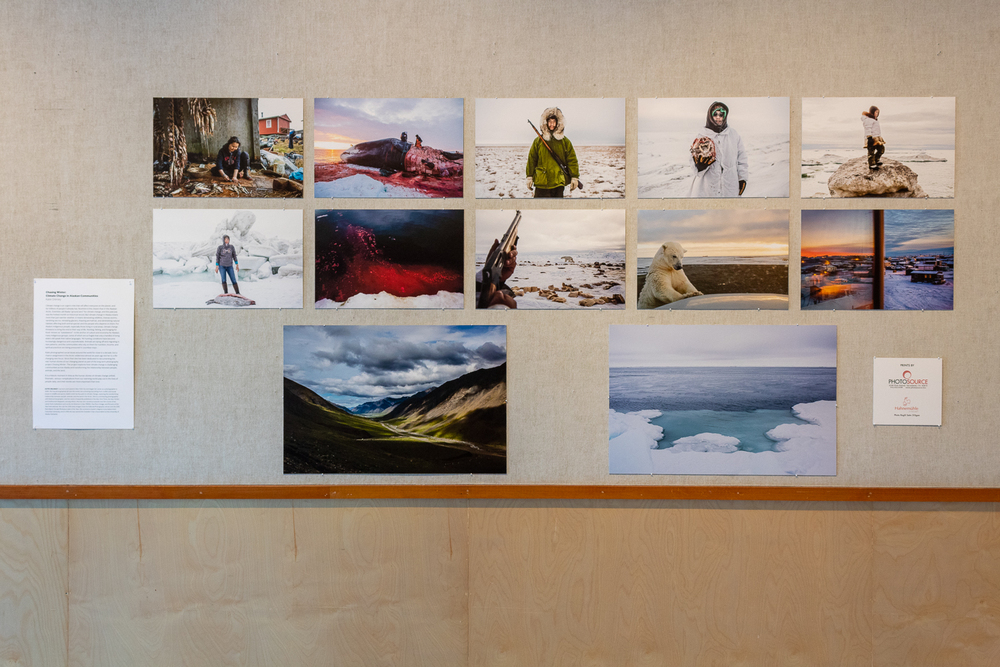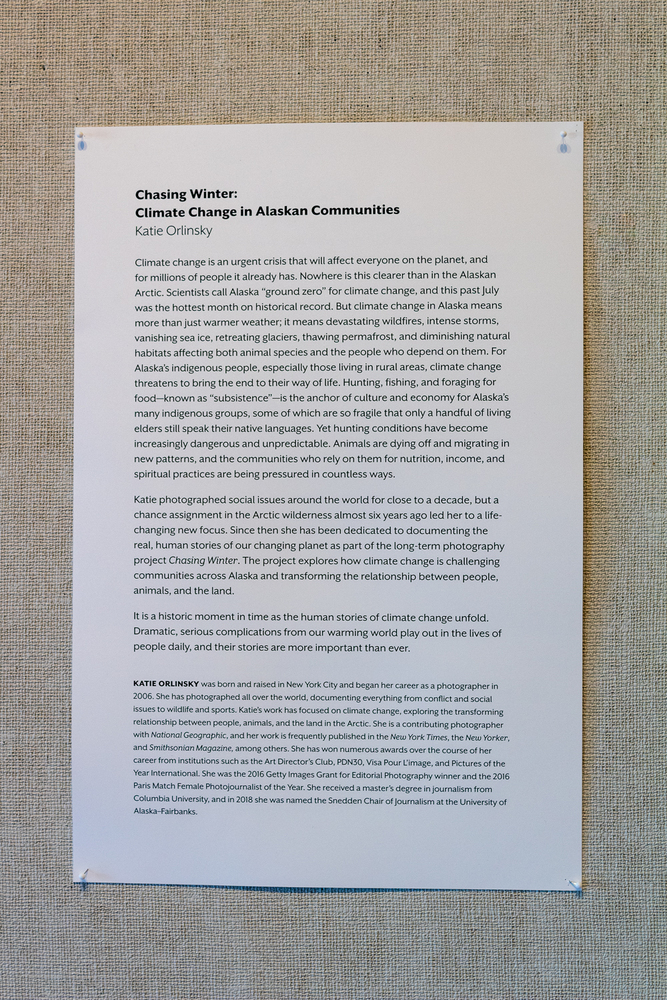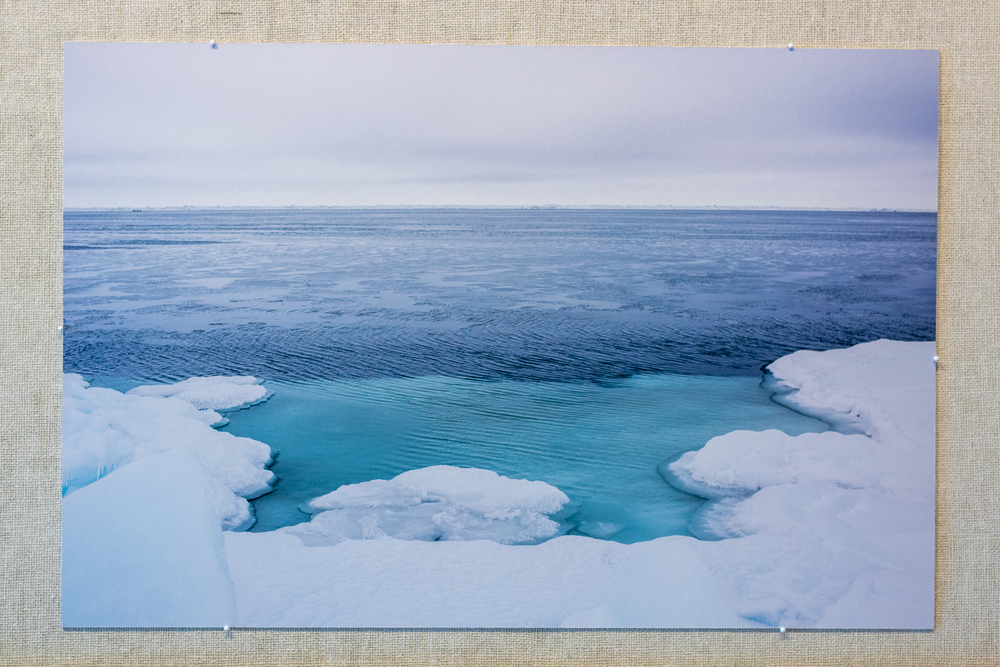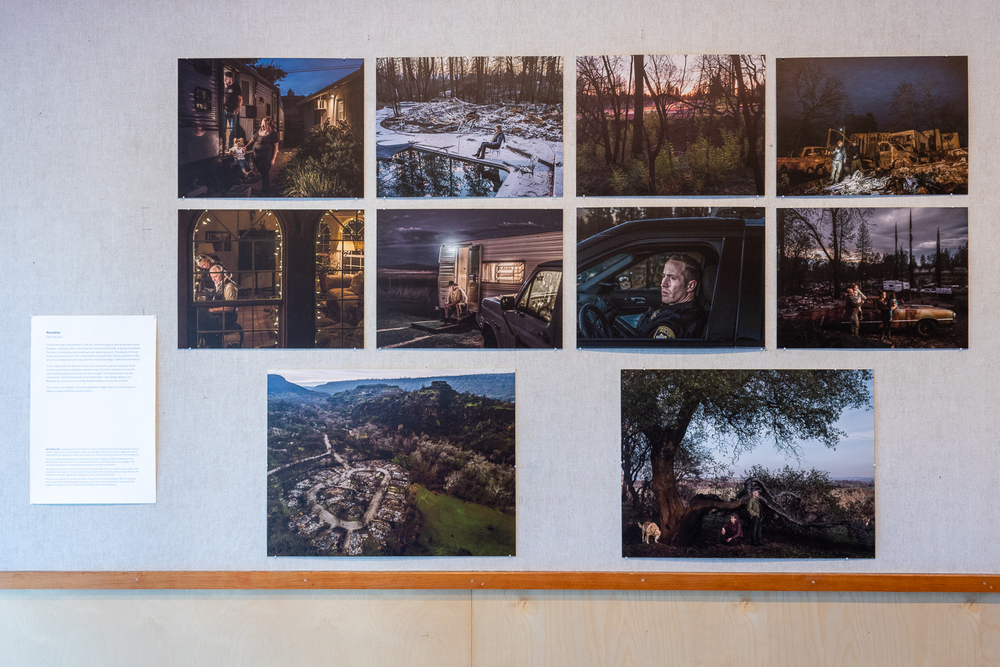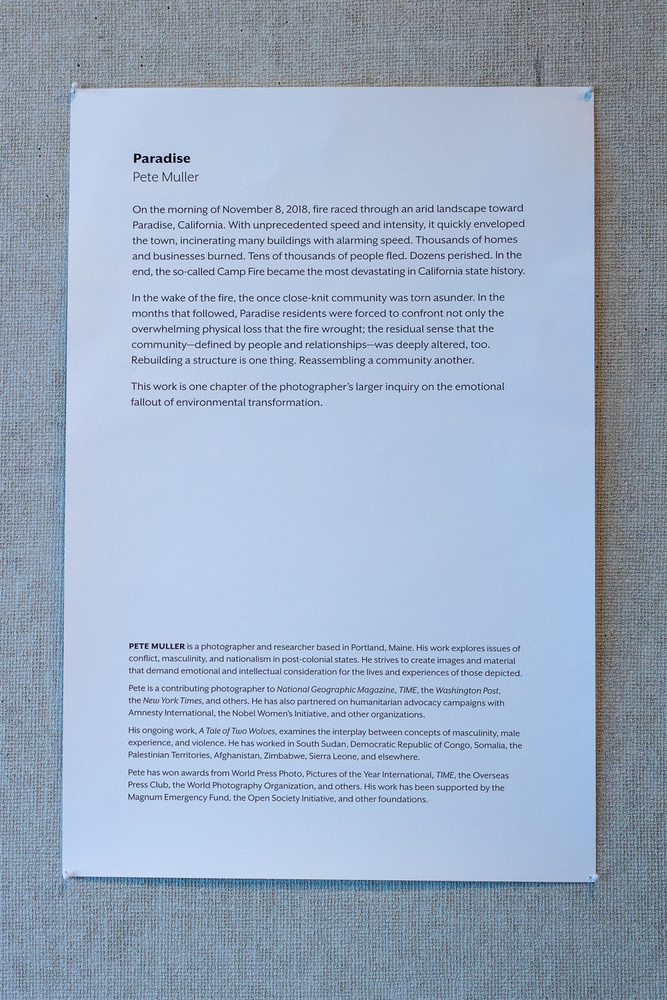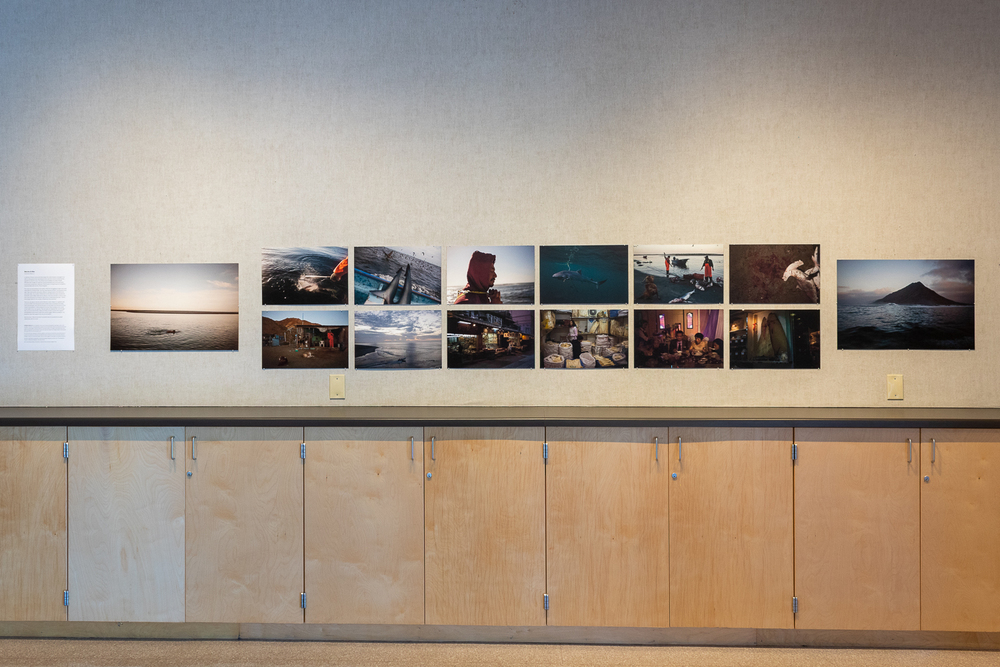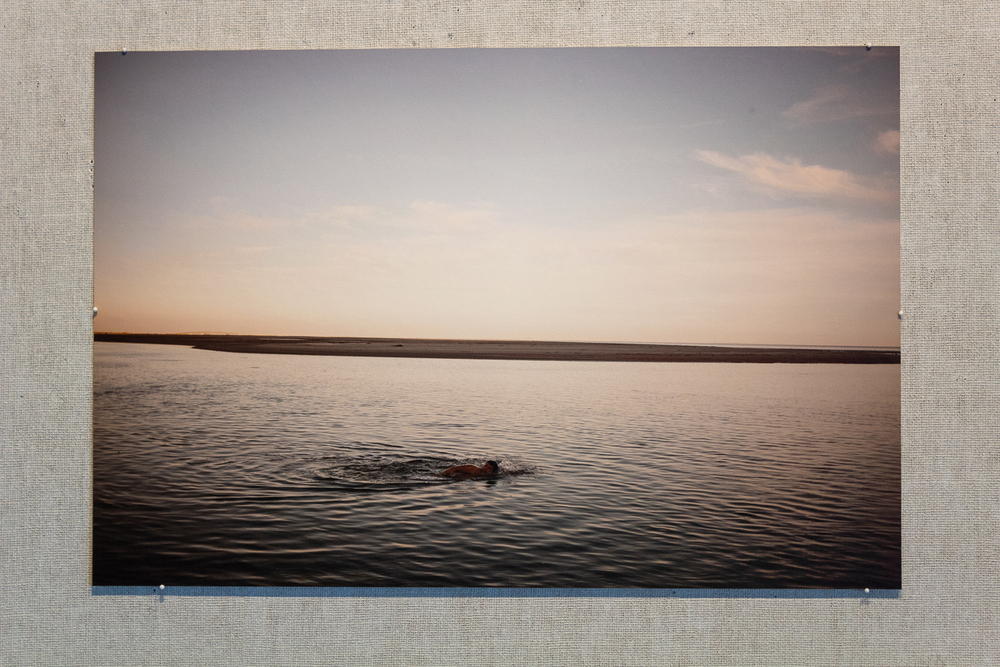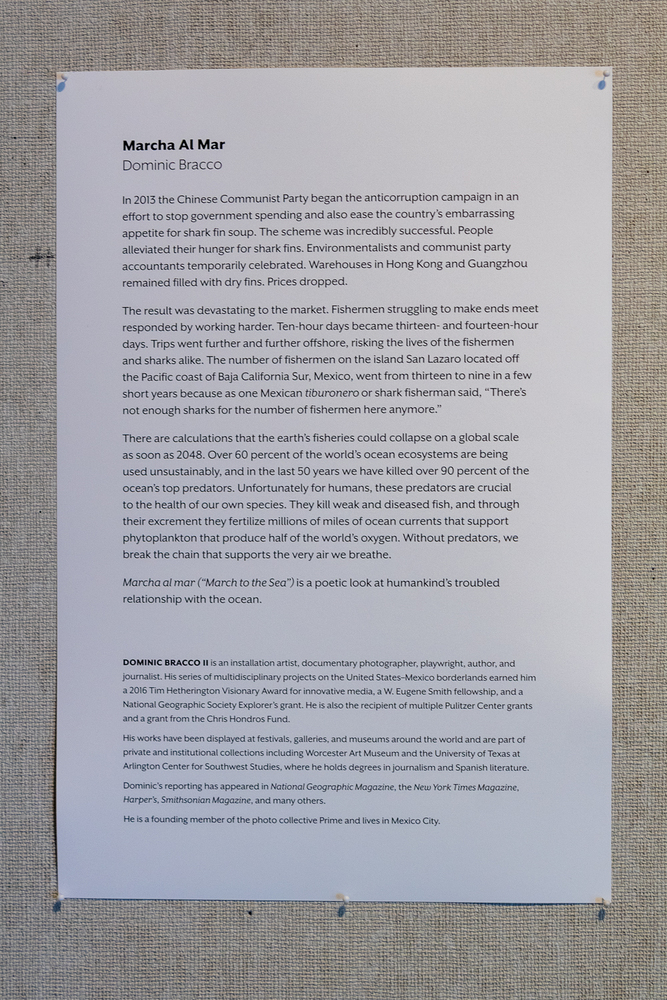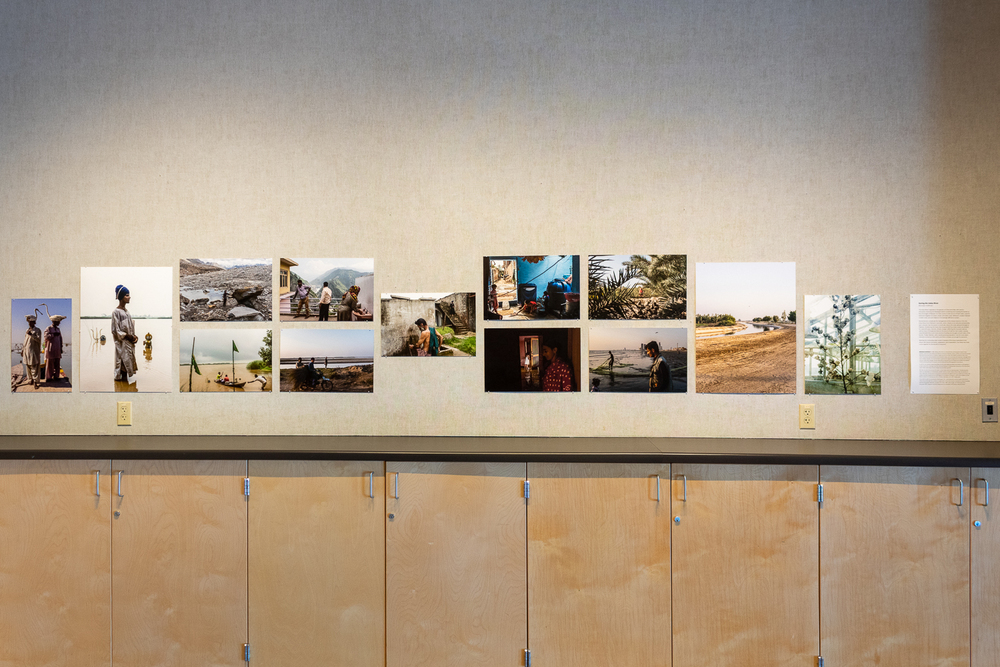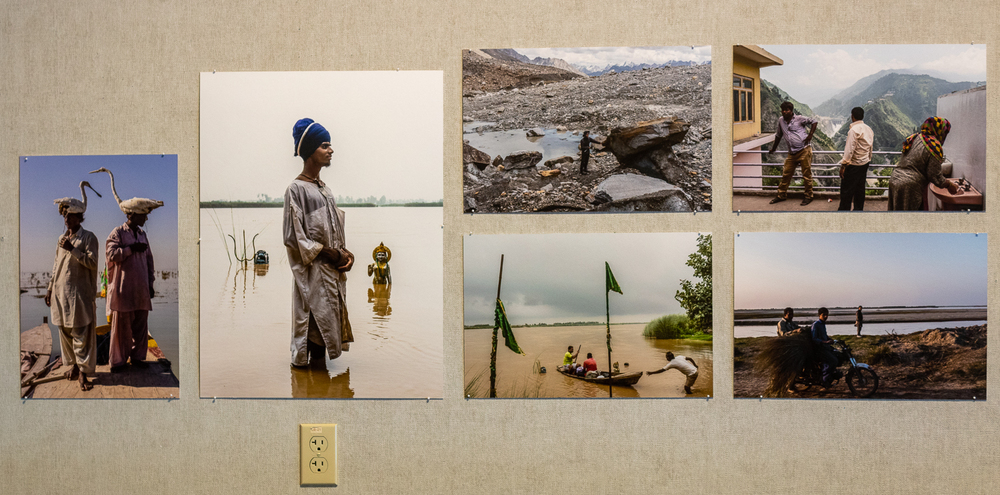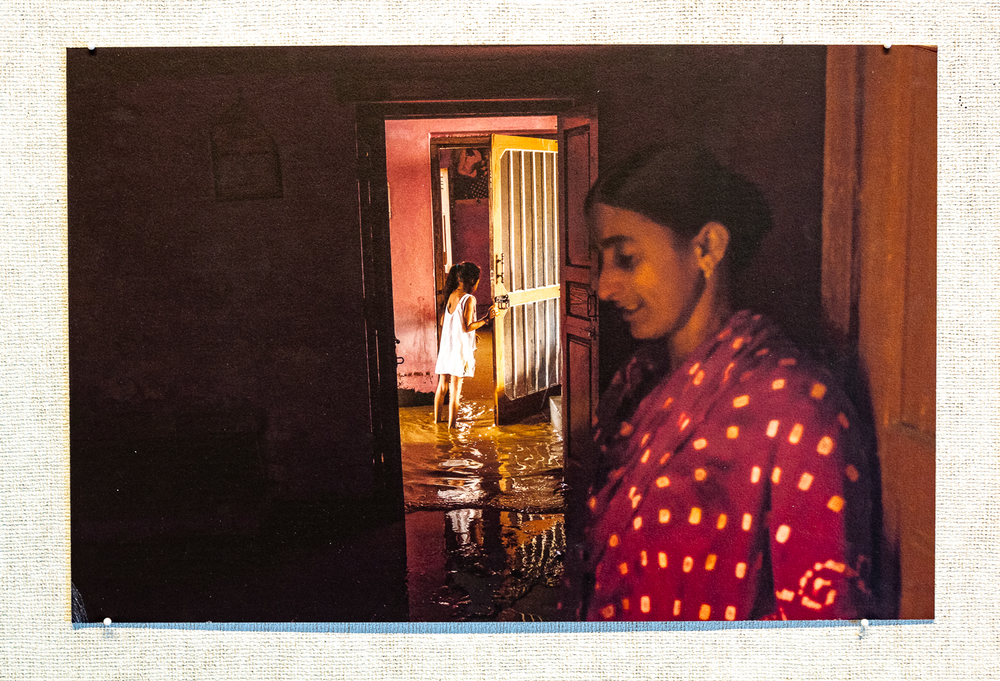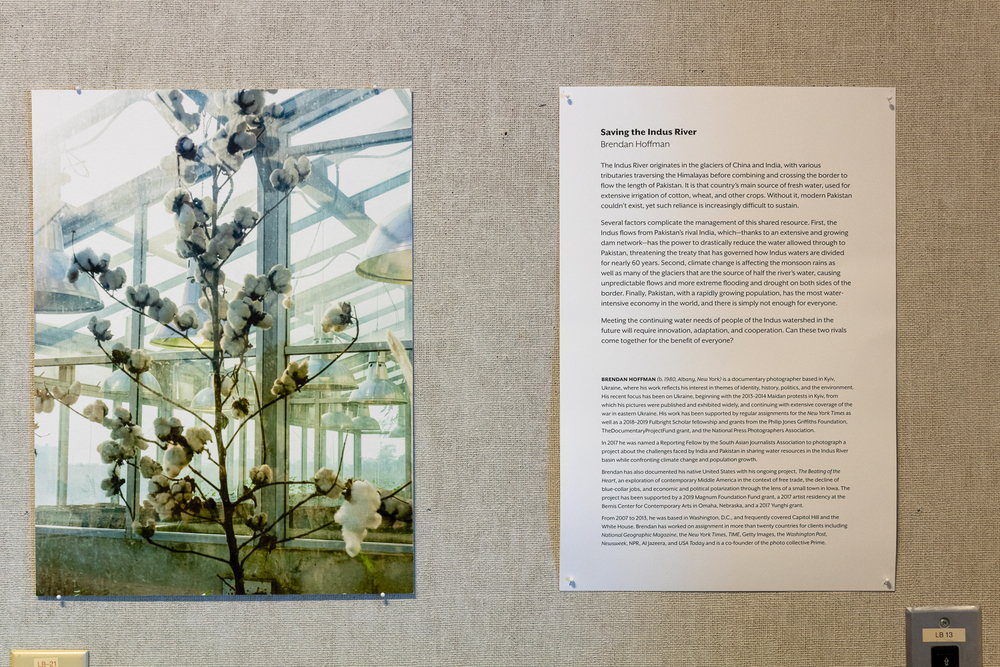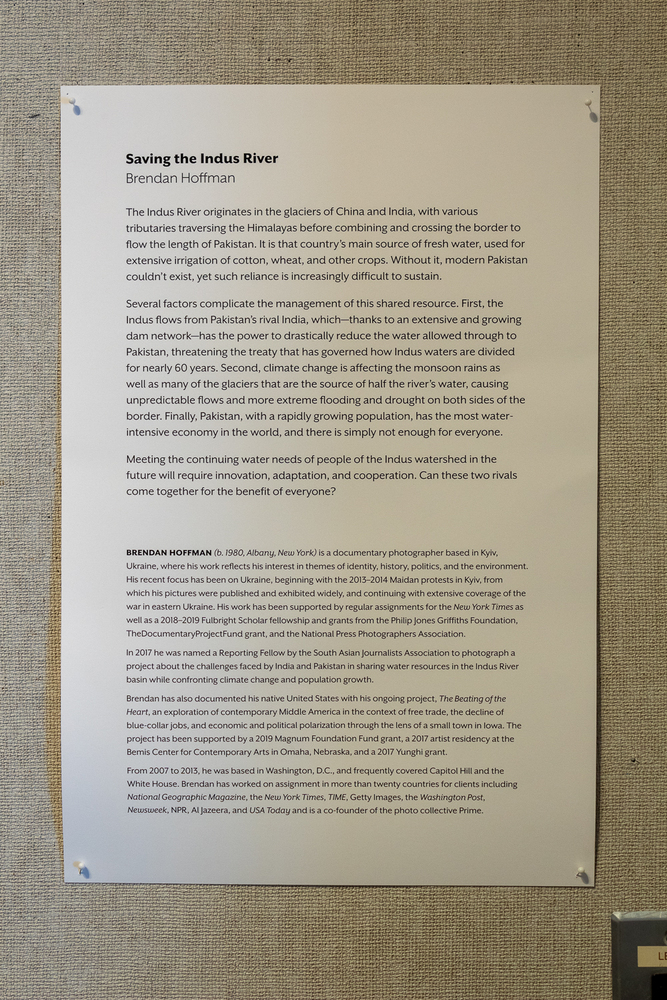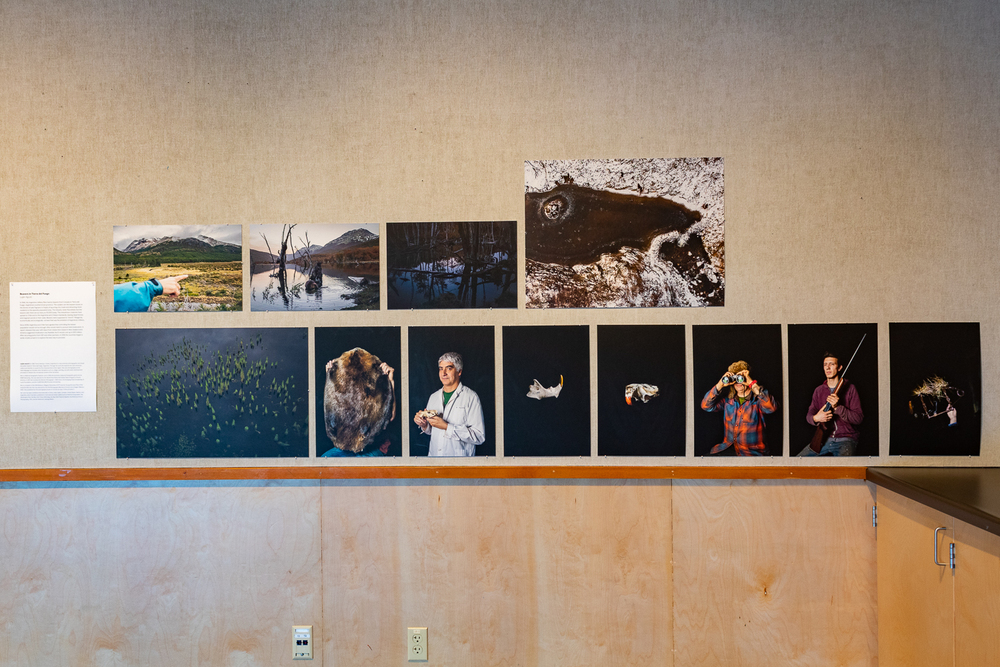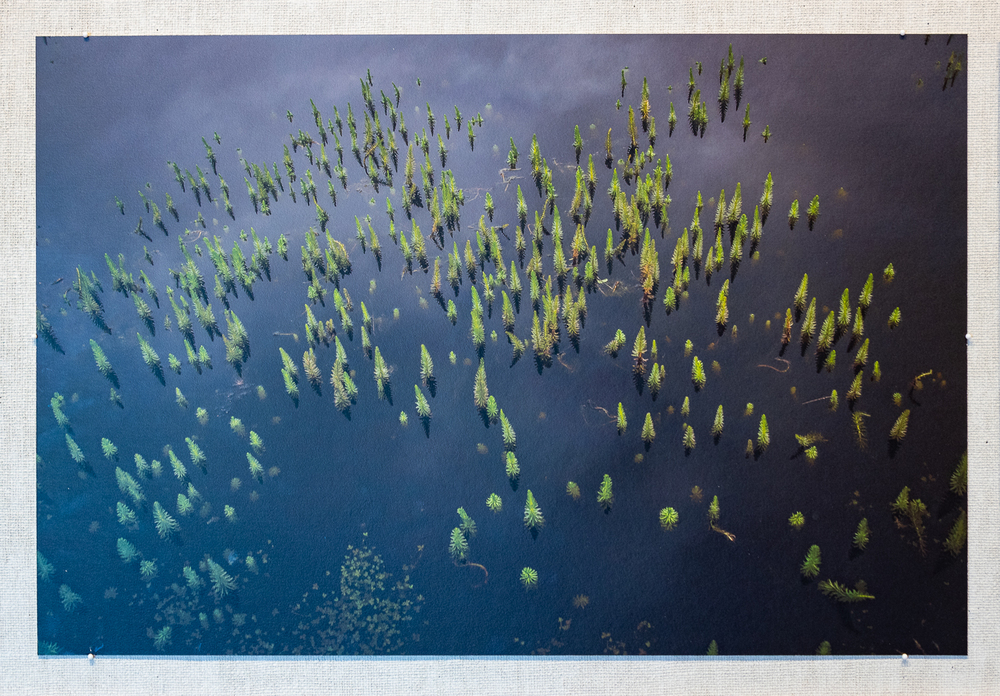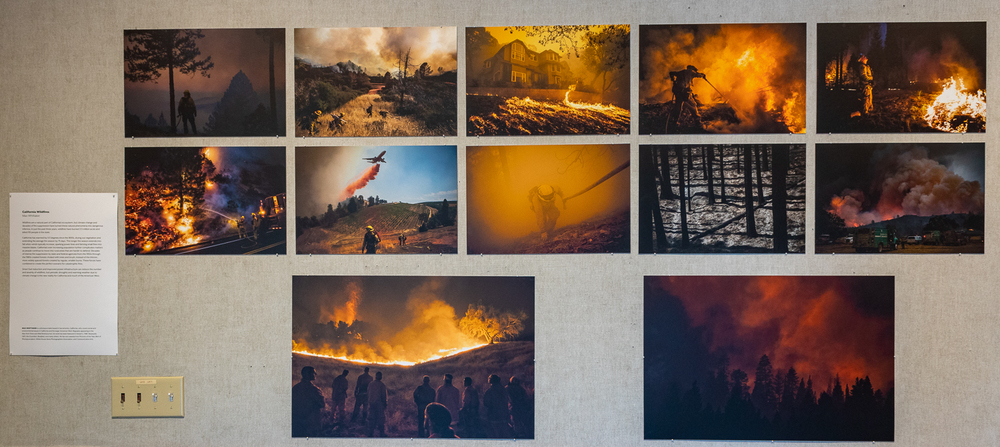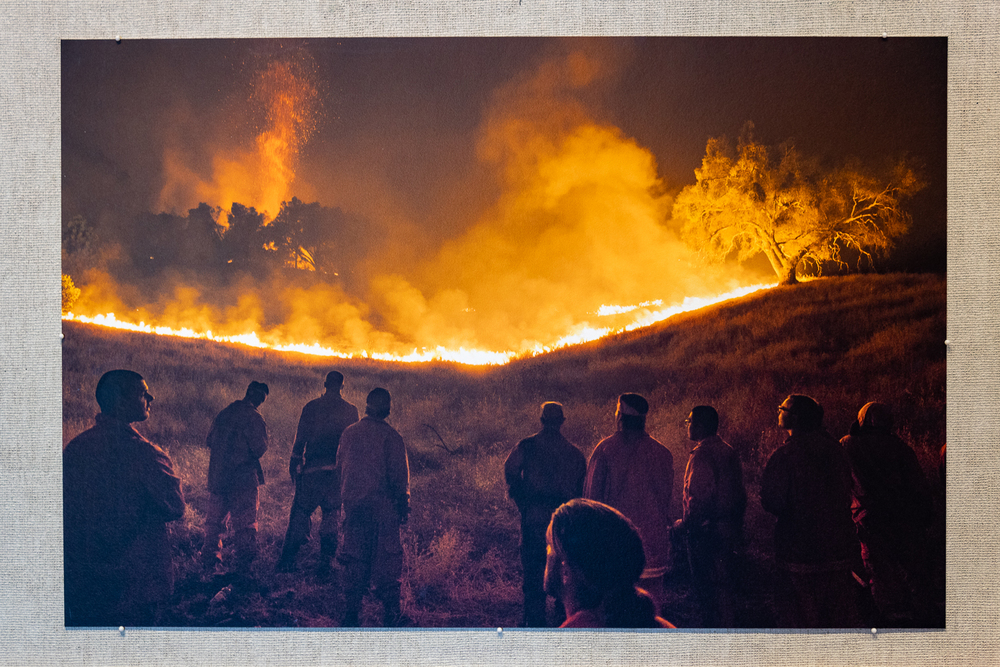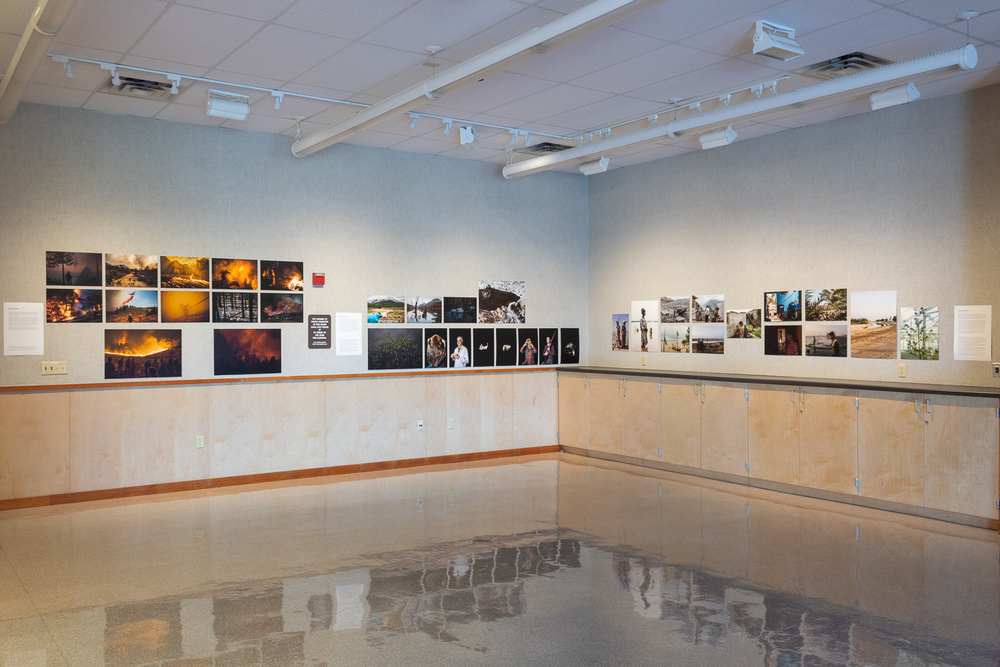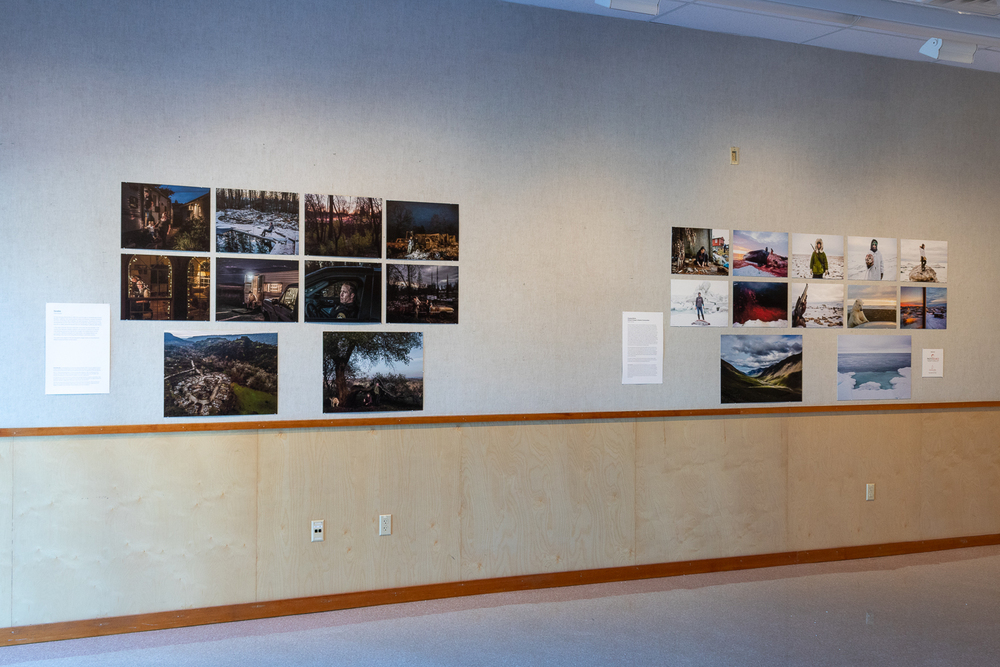A Visual Survey of the Environmental Crisis
Location:
Harvey Milk Photo Center
50 Scott Street, San Francisco, CA
Extended Dates:
Mar 6, 2020 to Jan 1, 2021
Reception/Presentation:
Friday, March 6 from 5pm to 8pm
Contact Person:
Dave Christensen, Director, Harvey Milk Photo Center
dave.christensen@sfgov.org
Curator: Liza Faktor
Website: www.lizafaktor.com
Producers: Mike Aviña and Ken Walton.
Harvey Milk Photo Center is proud to present Earth Shot, a visual survey of the current environmental crisis. Earth Shot takes its name from the common expression “moonshot” which refers to a high-risk venture or undertaking. The photographers, curator, and producers for the show feel that the need to reverse environmental decline represents a moonshot. Natural systems are imperiled worldwide, with climate change and other anthropogenic causes driving most of these changes.
Earth Shot is a collaboration between the Planning and Conservation League, Prime Collective, and the show’s curator and producers.
The Planning and Conservation League was founded in 1965 and lobbies for sound land use, planning, and environmental protection in California.
Prime Collective is a global collective of visual storytellers dedicated to describing the human experience with empathy and artistry.
The following photographers are members of Prime Collective:
Luján Agusti
Dominic Bracco II
Melanie Burford
Pete Muller
Katie Orlinsky
Max Whittaker
Luján Agusti
Beavers in Tierra del Fuego (click to see more)
In 1946, the Argentine military flew twenty beavers from Canada to Tierra del Fuego, Argentina’s southernmost province. The soldiers set the beavers loose on the shores of Lake Fagnano in hopes of spurring a fur trade and attracting more residents to the sparsely populated area. The industry never flourished, but the beavers did: there are as many as 110,000 today. The industrious creatures have spread to Chile and to the Argentine and Chilean mainlands, leaving dead forests and stagnant ponds in their wake. Beavers were supposed to “enrich” Patagonia, economically and ecologically—at least that was the ambition of Argentina’s military. Since 2008, Argentina and Chile have agreed that controlling the beaver population would not be enough: they would need to pursue total eradication. A report released that year with input from researchers based in New Zealand and America suggested eradication was feasible, but it would cost up to $33 million. After securing grants from GEF and other partners, in 2016 the countries began a series of pilot projects to explore the best way to proceed.
LUJÁN AGUSTI (b. 1986, Puerto Madryn, Chubut, Argentina) is a documentary photographer and visual storyteller based in Tierra del Fuego, Argentina. Through her work she explores the Latin American culture and identity in a quest for the empowerment of her region. She uses photography as her main language but includes other disciplines such as collage, painting, and alternative development processes to deepen the conceptual content of her narratives.
She is a National Geographic Explorer, and in 2018 she received a National Geographic grant and an IWMF fellowship. She was selected for the World Press Photo 6×6 Global Talent Program of South America. In 2017 she received the Women Photograph + ONA Grant, the Emerging Artist Scholarship of Lucie Foundation, and the CUARTOSCURO/Foundry Scholarship.
She is a recipient of the 2016 Roberto Villagraz Fellowship of EFTI and the Young Stimulus Prize of the ArtexArte Biennial. She was selected for the XVII Photography Biennial of Centro de la Imagen (Mexico, 2016). She published her first photography book Un montón de ropa (“A Pile of Clothes”).
Her work has been exhibited internationally in China, India, Spain, Canada, United States, Mexico, and Argentina, and it has been published in international media outlets such as National Geographic, the Washington Post, the New York Times LENS blog, the New York Times en Español, the British Journal of Photography, VICE, and de Volkskrant, among others.












Dominic Bracco II
Marcha Al Mar (click to see more)
In 2013 the Chinese Communist Party began the anticorruption campaign in an effort to stop government spending and also ease the country’s embarrassing appetite for shark fin soup. The scheme was incredibly successful. People alleviated their hunger for shark fins. Environmentalists and communist party accountants temporarily celebrated. Warehouses in Hong Kong and Guangzhou remained filled with dry fins. Prices dropped.
The result was devastating to the market. Fishermen struggling to make ends meet responded by working harder. Ten-hour days became thirteen- and fourteen-hour days. Trips went further and further offshore, risking the lives of the fishermen and sharks alike. The number of fishermen on the island San Lazaro located off the Pacific coast of Baja California Sur, Mexico, went from thirteen to nine in a few short years because as one Mexican tiburonero or shark fisherman said, “There’s not enough sharks for the number of fishermen here anymore.”
There are calculations that the earth’s fisheries could collapse on a global scale as soon as 2048. Over 60 percent of the world’s ocean ecosystems are being used unsustainably, and in the last 50 years we have killed over 90 percent of the ocean’s top predators. Unfortunately for humans, these predators are crucial to the health of our own species. They kill weak and diseased fish, and through their excrement they fertilize millions of miles of ocean currents that support phytoplankton that produce half of the world’s oxygen. Without predators, we break the chain that supports the very air we breathe.
Marcha al mar (“March to the Sea”) is a poetic look at humankind’s troubled relationship with the ocean.
DOMINIC BRACCO II is an installation artist, documentary photographer, playwright, author, and journalist. His series of multidisciplinary projects on the United States–Mexico borderlands earned him a 2016 Tim Hetherington Visionary Award for innovative media, a W. Eugene Smith fellowship, and a National Geographic Society Explorer’s grant. He is also the recipient of multiple Pulitzer Center grants and a grant from the Chris Hondros Fund.
His works have been displayed at festivals, galleries, and museums around the world and are part of private and institutional collections including Worcester Art Museum and the University of Texas at Arlington Center for Southwest Studies, where he holds degrees in journalism and Spanish literature.
Dominic’s reporting has appeared in National Geographic Magazine, the New York Times Magazine, Harper’s, Smithsonian Magazine, and many others.
He is a founding member of the photo collective Prime and lives in Mexico City.














Melanie Burford
The Gulf Oil Spill (click to see more)
On April 20, 2010, an explosion on the Deepwater Horizon/BP MC252 drilling platform in the Gulf of Mexico killed 11 workers and caused the rig to sink. As a result, oil began leaking into the Gulf, creating one of the largest spills in American history. During the next 87 days an estimated 4 million barrels (168 million gallons) were released from the reservoir, of which 3.19 million (134 million gallons) were released into the Gulf of Mexico.
The spill impacted wildlife, habitats, fishing communities, and commerce along the large coastal areas of Louisiana, Mississippi, Texas, Alabama, and Florida. The Gulf of Mexico’s diverse ecosystem that includes deep-sea ocean ridges and trenches, mid-depth banks, barrier islands, beaches, coral reefs, and estuaries was deeply shattered. As currents and winds spread the oil from the mile-deep spill site, all habitats were at risk of contamination.
Fish, shrimp, and shellfish populations that constitute the basic parts of the Gulf’s food web and are also important to the economic health of the region were compromised. To minimize human exposure to potentially unsafe seafood from the spill region, more than 80,000 square miles of commercial and recreational fishing grounds were closed while scientists investigated the impact of the spill and clean-up efforts on these organisms, affecting the lives of numerous families depending on fishing along the coast.
MELANIE BURFORD is a filmmaker, producer, editor, and photographer at the visual production company Silvereye Pictures in Bergen, Norway. Her career began in New Zealand before moving to America in 1999 and becoming a staff photographer and video journalist at the Dallas Morning News. She was part of the team of Dallas Morning News photographers who received the 2006 Pulitzer Prize for coverage of Hurricane Katrina. In 2009 Melanie moved to New York, becoming Series Producer at Blue Chalk Media and a founding member of the photo collective Prime.
Melanie believes strongly in the education and celebration of young voices around the world. She founded The Silvereye Project, which celebrates home, identity, and belonging between cultures. She was coordinator for three National Geographic photo camps in Norway and was editor and coordinator for two National Geographic photo camps in India. Her teaching career includes serving as adjunct assistant professor at Columbia University Graduate School of Journalism, adjunct lecturer at the University of Bergen, team leader and multimedia producer at the Eddie Adams Workshop, instructor of video storytelling at the NPPA Northern Short Course, keynote speaker and coach at the multimedia fall workshop at Syracuse University, and video storytelling instructor at Rochester Institute of Technology.
Melanie’s work has been recognized at the Emmy Advanced Media Awards, the Webby Awards, National Headliner Awards, the Harry Chapin Media Awards, the Clarion Awards, NPPA Best of Photojournalism, and Pictures of the Year International.














Pete Muller
Paradise (click to see more)
On the morning of November 8, 2018, fire raced through an arid landscape toward Paradise, California. With unprecedented speed and intensity, it quickly enveloped the town, incinerating many buildings with alarming speed. Thousands of homes and businesses burned. Tens of thousands of people fled. Dozens perished. In the end, the so-called Camp Fire became the most devastating in California state history.
In the wake of the fire, the once close-knit community was torn asunder. In the months that followed, Paradise residents were forced to confront not only the overwhelming physical loss that the fire wrought; the residual sense that the community—defined by people and relationships—was deeply altered, too. Rebuilding a structure is one thing. Reassembling a community another.
This work is one chapter of the photographer’s larger inquiry on the emotional fallout of environmental transformation. The photos featured in this exhibit were taken by Pete Muller on the ground in Paradise, California as cameras began to document the deadliest U.S. fire in 100 years. The fire killed 85 people, displaced 50,000 residents and destroyed 95% of local structure. The film, Rebuilding Paradise, follows the residents of Paradise, CA as they work together to heal in the aftermath of overwhelming devastation and teach us a lesson in what we all must do: protect our environment, help our neighbors, plan for future dangers and remember to preserve the traditions that unite us. The majority of images by Muller are portraits of residents featured in the National Geographic Documentary film. The film, directed by Ron Howard, debuted at the 2020 Sundance film festival and will be distributed further this summer. For more information on the film, how you can help residents and release plans please visit www.RebuildingParadise.film
PETE MULLER is a photographer and researcher based in Portland, Maine. His work explores issues of conflict, masculinity, and nationalism in post-colonial states. He strives to create images and material that demand emotional and intellectual consideration for the lives and experiences of those depicted.
Pete is a contributing photographer to National Geographic Magazine, TIME, the Washington Post, the New York Times, and others. He has also partnered on humanitarian advocacy campaigns with Amnesty International, the Nobel Women’s Initiative, and other organizations.
His ongoing work, A Tale of Two Wolves, examines the interplay between concepts of masculinity, male experience, and violence. He has worked in South Sudan, Democratic Republic of Congo, Somalia, the Palestinian Territories, Afghanistan, Zimbabwe, Sierra Leone, and elsewhere.
Pete has won awards from World Press Photo, Pictures of the Year International, TIME, the Overseas Press Club, the World Photography Organization, and others. His work has been supported by the Magnum Emergency Fund, the Open Society Initiative, and other foundations.










Katie Orlinsky
Chasing Winter: Climate Change in Alaskan Communities (click to see more)
Climate change is an urgent crisis that will affect everyone on the planet, and for millions of people it already has. Nowhere is this clearer than in the Alaskan Arctic. Scientists call Alaska “ground zero” for climate change, and this past July was the hottest month on historical record. But climate change in Alaska means more than just warmer weather; it means devastating wildfires, intense storms, vanishing sea ice, retreating glaciers, thawing permafrost, and diminishing natural habitats affecting both animal species and the people who depend on them. For Alaska’s indigenous people, especially those living in rural areas, climate change threatens to bring the end to their way of life. Hunting, fishing, and foraging for food—known as “subsistence”—is the anchor of culture and economy for Alaska’s many indigenous groups, some of which are so fragile that only a handful of living elders still speak their native languages. Yet hunting conditions have become increasingly dangerous and unpredictable. Animals are dying off and migrating in new patterns, and the communities who rely on them for nutrition, income, and spiritual practices are being pressured in countless ways.
Katie photographed social issues around the world for close to a decade, but a chance assignment in the Arctic wilderness almost six years ago led her to a life-changing new focus. Since then she has been dedicated to documenting the real, human stories of our changing planet as part of the long-term photography project Chasing Winter. The project explores how climate change is challenging communities across Alaska and transforming the relationship between people, animals, and the land.
It is a historic moment in time as the human stories of climate change unfold. Dramatic, serious complications from our warming world play out in the lives of people daily, and their stories are more important than ever.KATIE ORLINSKY was born and raised in New York City and began her career as a photographer in 2006. She has photographed all over the world, documenting everything from conflict and social issues to wildlife and sports. Katie’s work has focused on climate change, exploring the transforming relationship between people, animals, and the land in the Arctic. She is a contributing photographer with National Geographic, and her work is frequently published in the New York Times, the New Yorker, and Smithsonian Magazine, among others. She has won numerous awards over the course of her career from institutions such as the Art Director’s Club, PDN30, Visa Pour L’image, and Pictures of the Year International. She was the 2016 Getty Images Grant for Editorial Photography winner and the 2016 Paris Match Female Photojournalist of the Year. She received a master’s degree in journalism from Columbia University, and in 2018 she was named the Snedden Chair of Journalism at the University of Alaska–Fairbanks.












Max Whittaker
California Wildfires (click to see more)
Wildfires are a natural part of California’s ecosystem, but climate change and decades of fire suppression have turned these natural phenomena into dangerous infernos. In just the past three years, wildfires have burned 3.5 million acres and killed 155 people in the state. California has warmed by 3.5 degrees since the 1800s, drying out vegetation and extending the average fire season by 75 days. This longer fire season extends into fall when winds typically increase, sparking power lines and fanning small fires into massive blazes. California’s ever-increasing population further complicates matters as people continue to move into rural areas that are harder to defend. Decades of intense fire suppression by state and federal agencies from the 1950s through the 1980s created forests choked with trees and brush, instead of the thinner, more widely spaced forests created by regular, smaller burns. These forces have combined to create the perfect scenario for catastrophic fires. Smart fuel reduction and improved power infrastructure can reduce the number and severity of wildfires, but periodic droughts and warming weather due to climate change is the new reality for California and much of the American West.
MAX WHITTAKER is a photojournalist based in Sacramento, California, who covers social and environmental issues in California and the larger American West. Regularly appearing in the New York Times and Wall Street Journal, his work has been featured in Harper’s, TIME, Newsweek, GEO, the Guardian, Buzzfeed, and many others. He has won awards from Pictures of the Year, Best of Photojournalism, White House News Photographers Association, and Communication Arts.










Harvey Milk Photo Center Gallery
Photo by Melissa Keesor
